Costa Rica’s Poás Volcano National Park
Discover Poás Volcano National Park: hike active craters, spot rare wildlife like Bangs’s Mountain Squirrel and Fiery-throated Hummingbirds in misty cloud forests near San José.
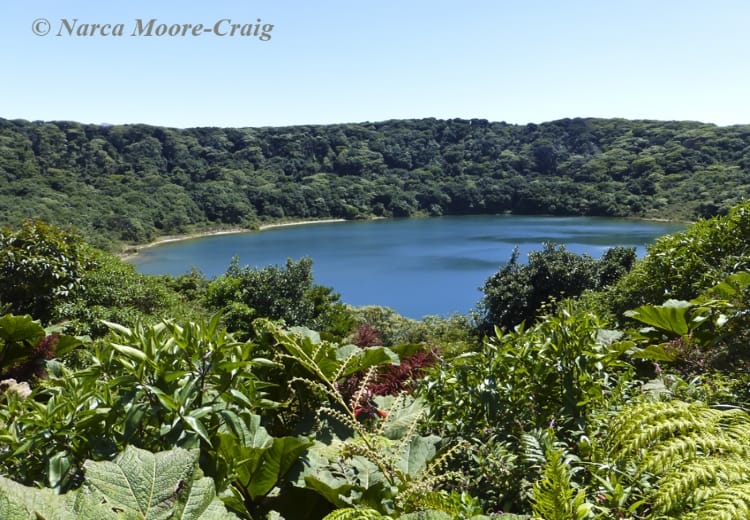
One of the best day trips from San José, Costa Rica, is a jaunt into the cloud forest at the summit of Volcán Poás National Park. Poás is an active stratovolcano about 8900 feet high; its last major eruption was in 1954. Today the crater steams, fumes, and regularly releases small geysers. The dwarf forest surrounding the crater protects a host of high-elevation bird species, as well as the little-known Bangs’s Mountain Squirrel.
The main crater of Poás is about a mile across and nearly 1,000 feet deep. From the edge, when the mists part, you can see the pastel-hued sulfuric lake at the bottom of the crater.
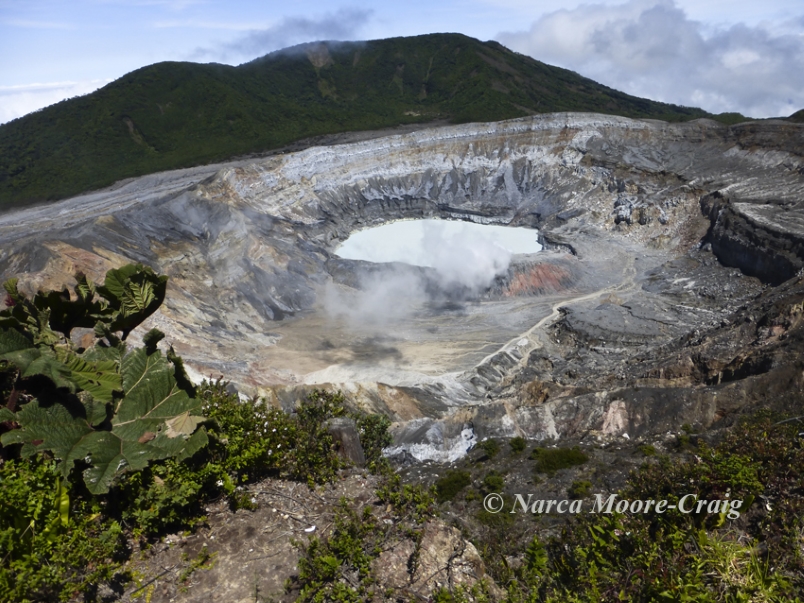
An active fumerole in the crater of Poás Volcano
Well-maintained trails lead to the main crater, to an extinct crater lake (Laguna Botos), and through the dwarf cloud forest, which is stunted by cold, high-elevation winds and by acid rain from the volcano.
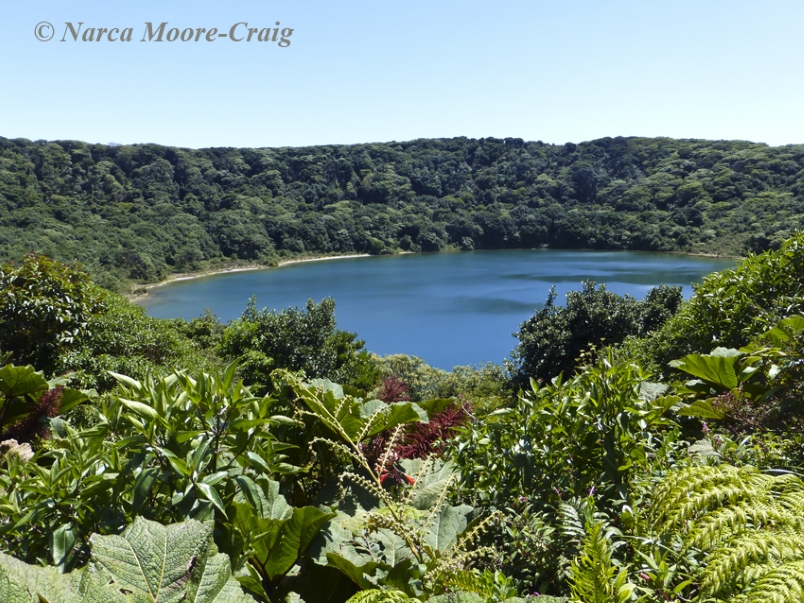
Laguna Botos fills a second crater, no longer active, at Volcán Poás
Most days, clouds cover the volcano’s summit. Mornings are usually clearer than afternoons. Even if the crater isn’t visible, you can still seek out the special inhabitants of the cloud forest. Poás is an excellent place to find Fiery-throated Hummingbirds, as they feed upon the nectar of bromeliad flowers.
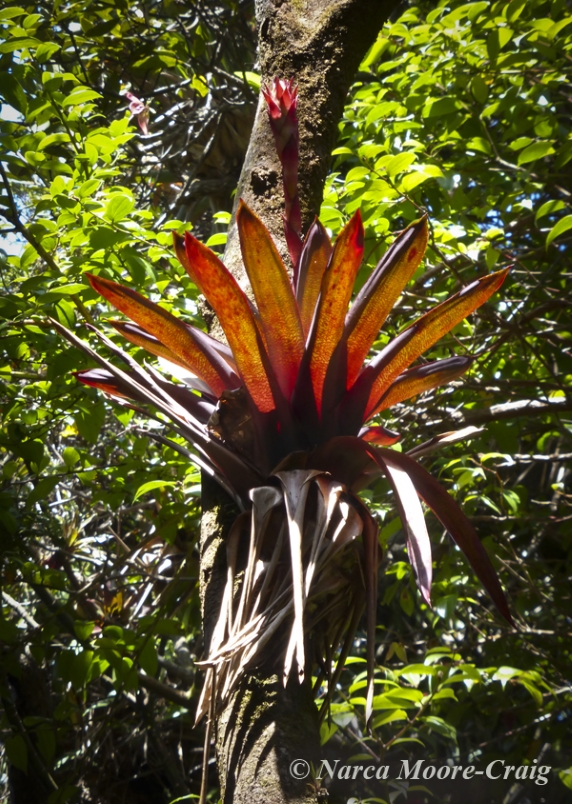
Bromeliad flowers attract Fiery-throated Hummingbirds
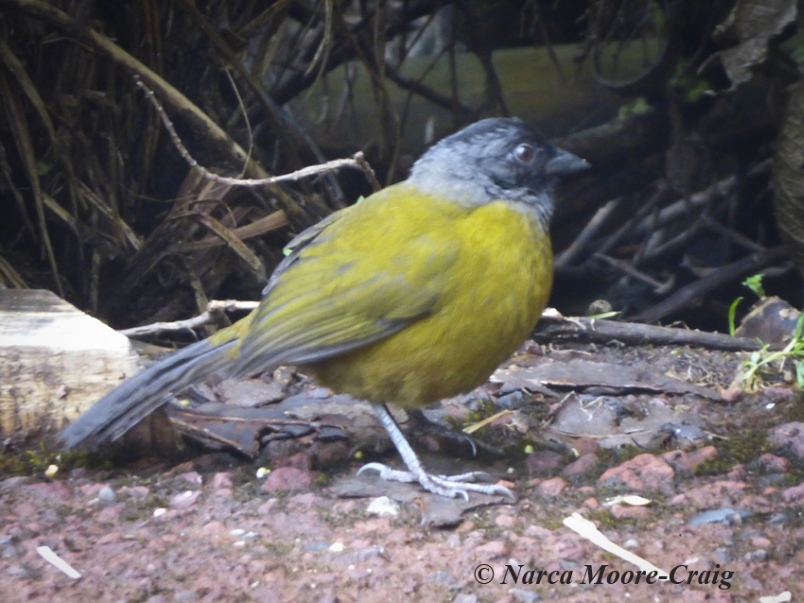
A Large-footed Finch at Laguna Botos, Costa Rica
Along the edges of the trails, you may find Large-footed Finches and Black-billed Nightingale-Thrushes.
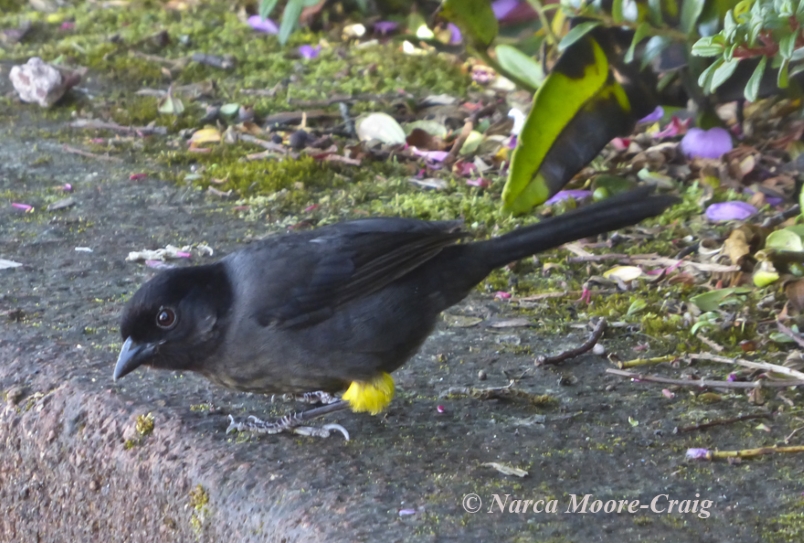
One of a troop of Yellow-thighed Finches at Volcán Poás
Yellow-thighed Finches and Sooty-capped Bush-Tanagers travel in small flocks through the shrubs. Black-and-yellow Silky-Flycatchers are more secretive, but if you’re sharp-eyed and lucky, you’ll see them as well. Even the supremely beautiful Resplendent Quetzal is possible.
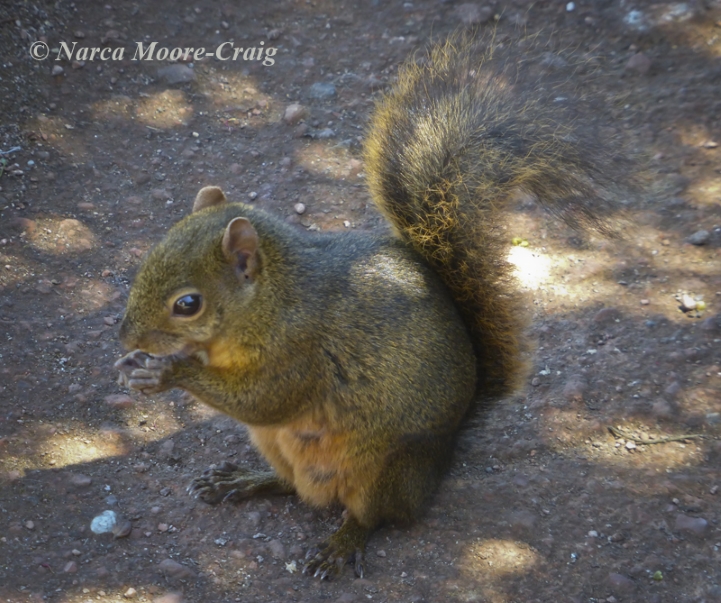
A Bangs’s Mountain Squirrel at the overlook for the main crater of Poás
Bangs’s Mountain Squirrel lives only in Costa Rica and Panama at an altitude of 6200 – 8500 feet, and is perhaps most easily found at the summit of Poás Volcano. Although it spends much of its time in the treetops, this small squirrel will also venture to the ground. Up until the 1980s, only four individuals of this species were known! If you find one in Poás, you are seeing a special critter, known from only a few locales.
The visitor center offers displays, a cafe, and a gift shop. Entry fee to the national park is $15 per person for nonresidents; it is collected at a booth near the park entrance, whatever your method of transport.
Sulfuric gas emissions can close the park to visitors.
Getting there: Visitors access the road to Volcán Poás from the town of Alajuela, near San José, either by driving a rental car, taking a bus from Alajuela, or arranging a trip through your hotel or tour operator. Some tours include a visit to a coffee plantation or butterfly garden. A tour arranged by your hotel may cost $30-50 more per person than a bus (depending on what is included in the tour), but undoubtedly is easier, especially for folks who don’t speak Spanish. You may also be able to set an earlier departure time, to arrive when fewer clouds obscure the summit.
If you are feeling adventurous and go by bus, you’ll need to catch the bus at about 8:30 AM from San José to Alajuela, then continue on the once-a-day bus from Alajuela to Poás. The bus to Poás leaves its passengers at the summit at about 10:30 in the morning, and picks them up at about 2:30 PM; four hours at the summit is a good amount of time for hiking the trails and birding.
Buses are confusing because there are so many terminals for different routes. The bus from San José to Alajuela leaves from a terminal directly across the street from the Merced Church, at Avenida 2 and Calle 12/14. Bus terminals, too, are notorious for thievery; you should be fine during daylight hours, but stay aware and follow normal precautions to prevent problems.
Alternatively, if you have a rental car, driving will give you more flexibility and allow you to visit earlier in the day, when weather is usually better and before the crowds arrive.
Poás offers visitors easy access to an impressive volcano and to high-elevation cloud forest, all in a short drive from San José. It well deserves its fame as a top destination in friendly Costa Rica.




